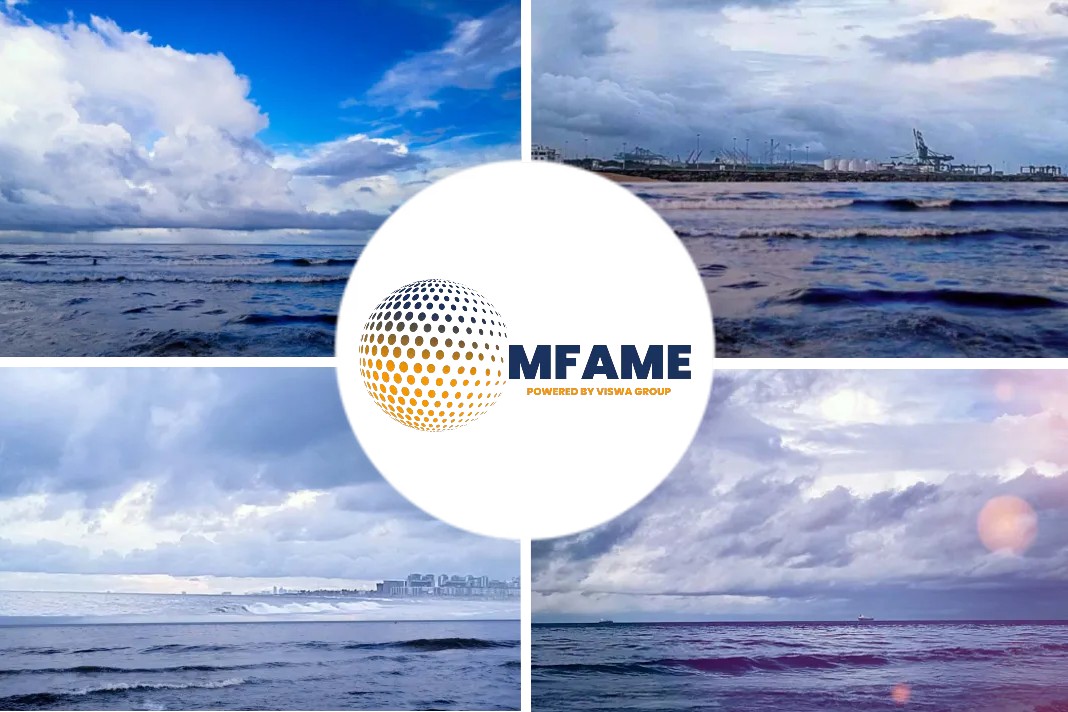
No doubt, the most famous disaster that comes to mind when talking about shipwrecks is the passenger liner Titanic. But in the cargo world, one of the most shocking remains the sinking of the MV Derbyshire in a mystery that lasted almost 20 years, reports The Freight Waves.
The Incident
Liverpool firm Bibby Line operated the MV Derbyshire, an oil, bulk and ore (OBE) carrier built in 1976, according to National Liverpool Museums. Four years later, the ship embarked on a journey from Canada to Japan that would last from July to September. Unfortunately, a few days before arriving at its final destination, the Derbyshire became the largest British merchant ship to sink, a title it still holds.
The ship’s crew were considered experts in the field and highly effective. Closing in on Japan, the vessel encountered a typhoon in the South China Sea. Its last known transmission reported a severe storm, but no distress signal was ever received. The ship disappeared without a trace with all 44 aboard, including two wives of crew members.
A search for the ship started on Sept. 15, 1980, but was called off by Sept. 21 as authorities declared it lost with no evidence or wreckage found.
What happened?
For crew members’ families, there were too many questions left unanswered. How could a massive ship disappear without a trace? The United Kingdom government chose not to undertake a formal investigation due to the lack of evidence but instead enlisted two independent companies to look into the incident.
The families came together to create the Derbyshire Family Association (DFA) to campaign for a formal investigation. And its fight for answers reignited when both the Tyne Bridge and MV Kowloon — two of the Derbyshire’s sister ships — experienced damage near frame 65, a potential weak point in the ships’ structure.
Given those damages, the U.K. government agreed to launch a formal investigation. Unfortunately for the families, the investigation’s conclusion was that the crew simply became overwhelmed by the storm and there was no evidence to support another theory.
“For the reasons stated in this report, the court finds that the Derbyshire was probably overwhelmed by the forces of nature in Typhoon Orchid, possibly after getting beam on to wind and sea, off Okinawa in darkness on the night of 9/10 September 1980 with the loss of 44 lives,” a media report read, according to the National Liverpool Museums. “The evidence available does not support any firmer conclusion.”
Not surprisingly, the families were outraged and continued to fight in their quest for the truth. The DFA used any means to get the word out, including participating in documentaries, speaking to the media and working with the House of Commons.
A report from Brunel University London revealed more significant stresses on frame 65 than previously thought, prompting the DFA to present a petition to the House of Commons that included 47,000 signatures and pleaded to reopen the investigation. But that still didn’t work.
The Derbyshire is found
Finally, in May 1994, the International Transport Federation (ITF) agreed to fund the search for the wreckage. And after a 23-hour excursion, United States-based firm Oceaneering Technologies found the sunken Derbyshire.
The search team followed areas where oil slicks appeared initially around the time the Derbyshire sank. Using specialized underwater vehicles and sonar, the team was able to identify the wreckage.
The U.K. government followed up with a second expedition to gather evidence and determine the cause of the sinking. Liverpool Museums says 135,774 still photographs were compiled to create a cohesive image of the wreck since its debris was scattered so far apart.
An almost 11-month investigation resulted in findings the DFA did not want to hear. Frame 65 was not the cause of the wreck — instead, it was human error. A hatch at the bow, known as the “Bosun’s store,” was unintentionally left open, causing the bow to sink with multiple compartments filling with water and buckling, quickly dragging down the ship.
Families of those lost — again — would not accept this finding, and another formal investigation was opened on April 5, 2000. The reopening hinged on the idea that the hatch in question was not left open.
A new witness
The U.K. government’s investigation of the wreckage concluded that the hatch was open from how its latches were laid when found. However, Capt. Nigel Malpass, the ship’s former chief officer who was moved off the Derbyshire’s crew right before its final voyage, came forward to say the hatch was secured a different way.
“Some people say I am the luckiest person alive, but in fact I should’ve been on the Derbyshire when she was lost,” Malpass said in an interview for Discovery’s The Smithsonian Channel’s “Disasters at Sea” documentary series. “I’d been with most of that crew [on] the trip before. I knew all the crew very well. Anybody that knew that ship knew you couldn’t have drawn that conclusion [of the hatch being left open]. One of the things that convinced me when I saw the photographs of the Bosun’s store was the bits of heaving line hanging off.”
Malpass explained that the Derbyshire’s practice was to secure this particular hatch with what’s known as a “cat’s cradle,” which would stop wingnuts from opening, keep the hatch secured and cause the latches to be laid in the manner they were found.
Ultimately, the new and final formal investigation lasted 54 days but arrived at a different cause for the sinking.
It was determined that continued rough seas damaged air pipes on the ship’s foredeck. Typhoon Orchid, said to be much stronger than typical typhoons, battered the Derbyshire for days with waves crashing onto the ship and damaging its No. 1 hatch. As the storm progressed, other hatches flooded and gave way until the ship finally sank.














![[Watch] Crazy Power Needed to Move World’s Largest Containerships](https://mfame.guru/wp-content/uploads/2023/11/mfame-tanker-100x70.jpg)
